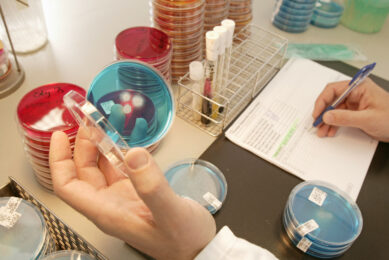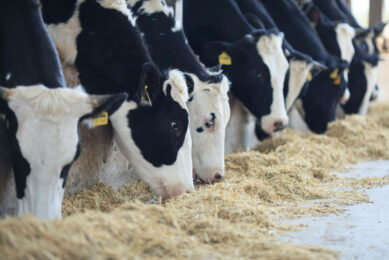Antibiotics: part of our heritage list?

Hooray!, antimicrobial resistance (AMR) has been reduced in Dutch broilers, fattening pigs, veal calves and dairy cattle. It’s the result of an effective policy, which has led to 57% reduction in antibiotics in the last five years. But to fight AMR, a true global action plan must be developed, as discussed by international hot shots this week.
An impressive assembly of international political leaders, physicians, leaders from the WHO, FAO and OIE, veterinarians and other experts from 40 countries came to The Hague, in the Netherlands last week to talk about AMR and what is needed to stop further increase of resistant bacteria. The evolution of resistant strains is a natural phenomenon that occurs when micro-organisms replicate themselves erroneously or when resistant traits are exchanged between them. But the use and misuse of antimicrobial drugs (in humans and animals) accelerates the emergence of drug-resistant strains. So time for some action!
Antibiotics as heritage
A statement, released by the World Alliance Against Antibiotic Resistance (WAAAR) prior to the conference, included ten priorities to fight resistance. One of the priorities is to increase knowledge about the topic among the public and healthcare professionals. There is also a proposal to include antibiotics in the Unesco list of cultural heritage. “Antibiotics can be considered as wonder pills. They cure a disease in a short time. We want to keep this heritage for the next generations to come”, according to the WAAAR. It may sounds weird to put antibiotics on this list, but it is clear statement. From a more practical view, they also plea for less use in Western countries but more access to antibiotics in poor countries. “Half of the people in India doesn’t even have access to antibiotics, because they don’t have the money”. They also want antibiotic stewardship, meaning that people who subscribe the antibiotics are watched by their peers and tackled if they use the medication in a wrong way. Also better diagnostics is one of the WAAAR priorities. They addressed that certain antibiotics are given, based on the experiences from the doctors. But they might not be the right choice for that specific bacteria. Bernard Vallat, Director-General at the World Animal Health organisation OIE said that farmers should be educated when using antibiotics. “There is no control and farmers are not educated to give the medicines”, Vallat said.
Action plan
The statement by the World Alliance Against Antibiotic Resistance is a very important one, but it was no coincidence that the international political leaders came together last week. It was the right timing after the World Health Association adopted a resolution to establish a global action plan on antimicrobial resistance, recently. The experts agreed on a number of building blocks for this plan, which will be presented by the WHO next year. The plan looks at reducing the increasing antibiotic resistance, both from a human as livestock perspective, and – very important – on a global level. Director-General of the WHO, Margareth Chan said at the meeting: “The problem we have with antibiotic use in livestock is a result of the growing demand for meat in the last decades. This has forced the farmers to produce more animal protein, for a lower price”, Chan said. She addressed the need to fight the AMR issue together.
Co-operation between countries
Some concrete measures to fight AMR together were already made at the conference. The Indonesian Minister of Health, Nafsiah Mboi asked the Dutch state secretary of Agriculture, Sharon Dijksma for assistance in reducing the antibiotics used in Indonesian livestock. “I immediately said yes, as we can certainly see potential to help Indonesia with this: it is an large country with many farm animals and high antibiotic use”, Dijksma explained. It shows that the Netherlands is seen as a success story when it comes to antibiotic reduction. It is a small country, but also the second largest exporter of agricultural goods. And the country used to be a heavy user of antibiotic. With a solid and effective plan, the use of antibiotics has been reduced by 57% compared to 2009. Dijksma also agreed with the French and Danish to keep up the pressure in Eastern Europe. In this part of Europe, the volumes of antibiotics used in animal production are still too high.
Differences around the world
But although the Netherlands is seen as one of the countries that has a good system in place, it doesn’t necessarily mean that this approach will work in every country around the world. As stated at the conference, many countries are afraid that cutting back on antibiotics might lead to economic damage, just when they start to actually make profit on their farms. “The lessons learnt in the Netherlands, could be key elements of a regional and international approach”, Dijksma explained. In my opinion, it might take some time before some countries are ready to actually curb or even ban certain antibiotics in livestock. A good registration system and maximum values at farm levels (including penalties when these are exceeded) are one of the key elements. We can and must never be satisfied with the reduction levels certain countries have already accomplished. AMR is a global issue and considering that we have built up resistant genes over the last 70 years, it is a difficult task to reverse this trend on the short term.
Some quotes were sourced from Boerderij Vandaag and NOS.











